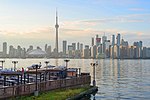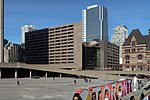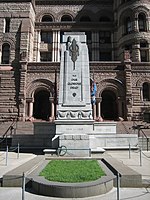Shea's Hippodrome

Shea's Hippodrome was a historic film and play theatre in Toronto, Ontario, Canada. The Hippodrome was located in downtown Toronto, at the southwest corner of Albert and Bay streets (now Nathan Phillips Square). At its opening in 1914, it was the largest movie palace in Canada, and one of the largest vaudeville theatres in the world. The Hippodrome included 12 opera boxes, a Wurlitzer organ, as well as a full-size orchestra pit. It debuted some of Canada's first non-silent films. It was built by brothers Jerry and Michael Shea and situated directly across from Toronto's (now former) City Hall. The Hippodrome was operated by Famous Players and managed for decades by Leonard N. Bishop. It was demolished in 1957 to make way for Toronto's new City Hall.
Excerpt from the Wikipedia article Shea's Hippodrome (License: CC BY-SA 3.0, Authors, Images).Shea's Hippodrome
Albert Street, Old Toronto
Geographical coordinates (GPS) Address Nearby Places Show on map
Geographical coordinates (GPS)
| Latitude | Longitude |
|---|---|
| N 43.652613 ° | E -79.382709 ° |
Address
Nathan Phillips Square
Albert Street
M5G 2E1 Old Toronto
Ontario, Canada
Open on Google Maps









